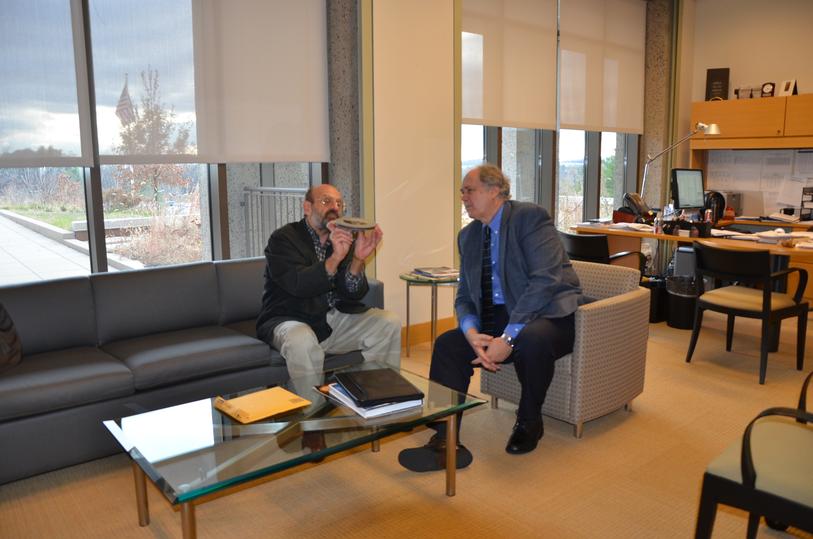
Maybe the world's only remaining intact EVR cartridge - actually contains a video George Beker wrote nearly 50 years ago on how to use an Abacus

Greg Lukow (right) and me in his office pretending that the EVR cartridge is a flying saucer . . .
.
(Greg is Chief, Motion Picture, Broadcasting & Recorded Sound Division of the Library of Congress'
Packard Campus for Audio Visual Conservation)
_________________________________________________________________________________________
| Here's
a close-up of the film in the EVR cartridge the Bekers donated to the
Library of Congress. The cartridge dates back to the early 1970s
when George Beker was creating media for the Videorecord Corporation of
America. While there he wrote and produced several projects
including "Abacus" - which is on this cartridge. The film in the cartridge is 8.75 mm wide with audio tracks on each outer side. There are two side-by-side frames that are read by a flying spot scanner and create the color image. One frame (the top side here) has the luminance information (essentially a B/W photographic image); the matching frame (below it) carries the chroma information. If you look carefully, you can see frames of an abacus in the top track; it's from the show I wrote way back when . . . |

| EVR
was probably the last medium in the evolution to today's
DVD/BluRay world that you could actually hold up to the light and see
what's on it (at least you could see the B/W images, the matching
chroma frames were not understandable to the naked eye). One last techno-note. The EVR format was designed to allow either B/W or color programming. In the color mode, EVR used the side-by side color/luminance frames just explained above. If you were using the B/W mode, you could get twice as much running time since EVR used the color mode's luminance track to carry a second, equal length of B/W material. Likewise, the color mode used both of the magnetic audio tracks for stereo while the B/W mode used only one track for each B/W track for mono output. For those moved to learn more about the whole EVR saga, Click Here for an interesting essay (reprinted by permission) by Catlin Hammer entitled A Spectacular Failure, The History of Electronic Video Recording. |

Back to EVR Menu
Copyright 2017 - All Rights Reserved